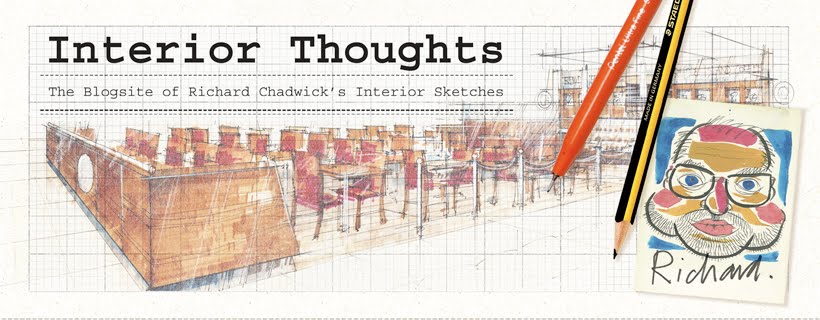As it enters its fnal week we finally got to the V&A to see ' The Cult of Beauty - The Aesthetic Movement 1860 - 1900 ' which I enjoyed very much - it was interesting to see the Pre-Raphaelite movement placed into a wider cultural context , and the influence of the Aesthetic Movement on both the burgeoning Arts and Crafts movement and the then growing interest in domestic interior decoration , which was always going to appeal, given my background . Exhibitions these days tend to be very much more than a single artist collection , and the setting within a wider social context allows for both a greater collection of exhibits and a greater interpretation - sometimes reinterpretation - and understanding of both their time and their place.
.........We then wandered through to the newly re-vamped Renaissance Galleries - The Simon Sainsbury gallery is particularly effective , where again - much on the lines of the Sackler Gallery at the RA - a hitherto inaccessible external space has now been roofed over and incorporated within the main exhibition space , providing a top-lit space of considerable height in which to display more architectural elements.........visible in this first picture is one of the few timber-frame building frontages to survive the Great Fire of London , and close up the scale and size is quite spectacular.......
........but to my mind by far the most intriguing , if not bizarre , exhibit is this staircase , marooned in flight , going nowhere . Rescued from a Breton house in the town of Morlaix at around 1860 , it dates back to around the 17th century ; but why would someone just preserve the staircase ? Staircases , more than most other architectural forms , depend on context to make sense.........where was it going from, where was it going to ? Quite a few of the treads have not survived , particularly the top flight , and neither have the landings , so being able to climb the stairs is a non-starter . A structure robbed of its meaning , an exo-skeleton , a journey suspended and preserved in time. The support steelwork is minimalist , beautifully detailed and executed , and the whole of the staircase must have been dry assembled within a scaffolding frame , to allow the steelwork to be set-out prior to manufacture; the support steelwork then determines the setting out and construction of the wall , so the staircase for once dictates the surrounding construction. The whole structure hangs there lightly in space , a staircase without steps ,a ghost from times past...............
It just looked so light and so beautiful.......



No comments:
Post a Comment